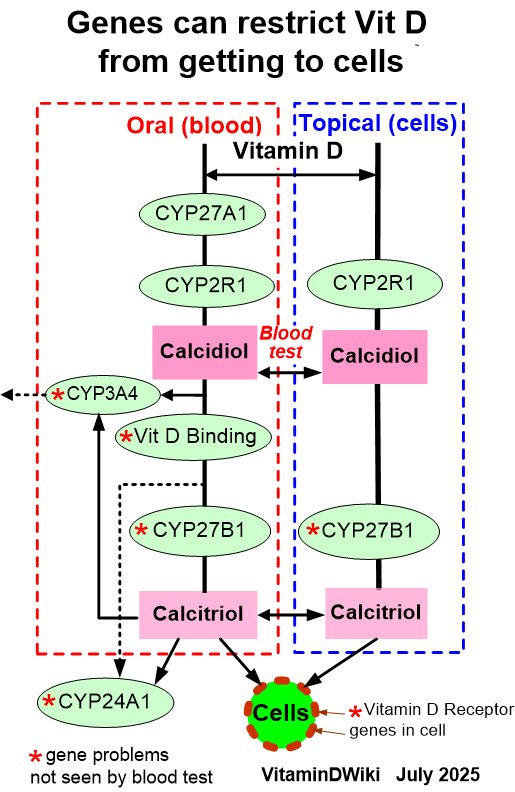Multiple Sclerosis 5.1 X more likely if poor sun and poor HLA-DRB1×15:01 - meta-analysis
A systematic review and meta-analysis on gene-environment interaction effects on the associations of vitamin D and sun exposure with multiple sclerosis risk
Review Mult Scler Relat Disord 2025 Oct:102:106634. doi: 10.1016/j.msard.2025.106634
Mehari Woldemariam Merid 1, Liyang Xu 2, Yuan Zhou 3, Ingrid van der Mei 4, Daniel J Park 5, Steve Simpson-Yap 6
Background: Multiple sclerosis (MS) is a complex neurological disease influenced by genetic and environmental factors, including low vitamin D and sun exposure. However, whether these interact with genetic loci is unclear. This systematic review and meta-analysis evaluated gene-environment interaction (GxE) studies on vitamin D and sun exposure in MS risk.
Methods: We searched relevant databases including Medline, Embase, CINAHL, and Web of Science from conception until 8 June 2024. We included observational studies assessing GxE related to vitamin D and/or sun exposure with MS risk. Environmental and genetic exposure and other relevant data were extracted and additive interaction statistics including four-level interactions, synergy index (SI), relative excess risk due to interaction (RERI), and attributable proportion due to interaction (AP) were meta-analysed for comparable studies. All included studies were assessed for quality and risk of bias using recommended checklists.
Results: We included 11 studies (10,857 cases;11,842 controls), of which three examined gene-vitamin D, four gene-sun, and four both gene-vitamin D and gene-sun interactions. Studies used varied measures to assess vitamin D status, most commonly serum 25(OH)D levels, while sun exposure was primarily based on self-reported data. HLA-DRB1×15:01 variant was the most common genotype evaluated. Consistently, the joint effects of either low vitamin D or low sun exposure with the HLA-DRB1×15:01 risk variant were stronger than any individual factor. Under stringent inclusion criteria, our meta-analysis focused on assessing additive interactions between low sun exposure and HLA-DRB1×15:01 with MS risk. We observed that carriers of both risk factors had a five-fold higher MS risk than those exhibiting neither factor ( aOR=5.17 ;(95 %CI=4.39-6.17), SI=1.49, RERI=1.42, AP=0.28). No publication bias: heterogeneity was moderate.
Conclusions: Nearly half of MS risk was super-additive for low sun and HLA-DRB1×15:01 interactions and GxE was also evident for low vitamin D and MS risk genes, underscoring the importance of gene-environment interplay in MS risk prediction.
📄 Download the PDF from VitaminDWiki
HLA-DRB1×15:01 is associated with BOTH low cellular vitamin D and low sun - Perplexity AI Sept 2025
Related in VitaminDWiki
People with Multiple Sclerosis have blunted responses to Vitamin D supplementation - Jan 2024
Vitamin D genes associated with Multiple Sclerosis - Aug 2025
Glutathione improves Vitamin D in 9 ways - repairing the MS gene problems))
Gene variants can reduce Vitamin D response by 1.7X (14,000 IU daily, Multiple Sclerosis) – Dec 2021
Multiple Sclerosis more likely if poor vitamin D genes - 22nd study – Aug 2017 CYP2R1
Not a single case of multiple sclerosis in 15,000,000 people (plant-based diets)
Multiple Sclerosis 2X-3X more likely if poor Vitamin D Receptor – Meta-analysis Feb 2020
Multiple Sclerosis half as likely if get plenty of sunshine (not a news item) – March 2018
Genetics chart shows that many genes reduce the cellular without reducing the blood levels of vitamin D

